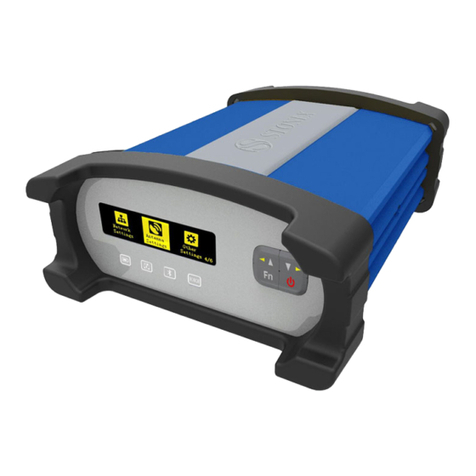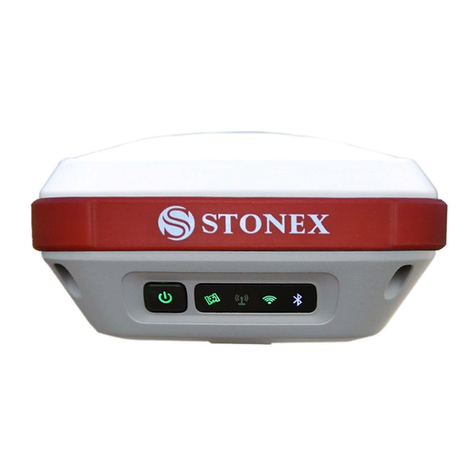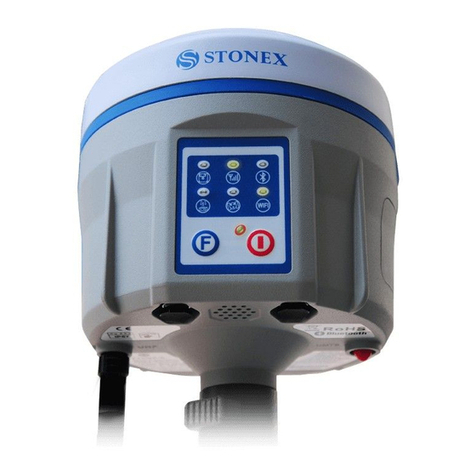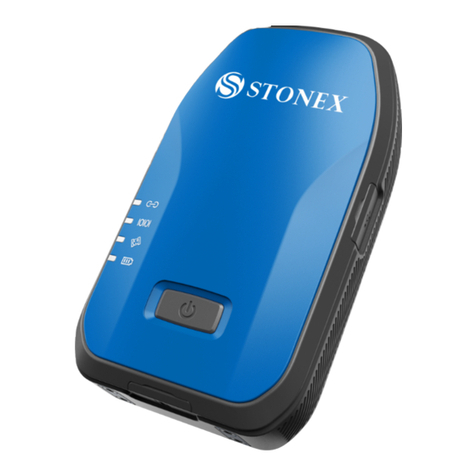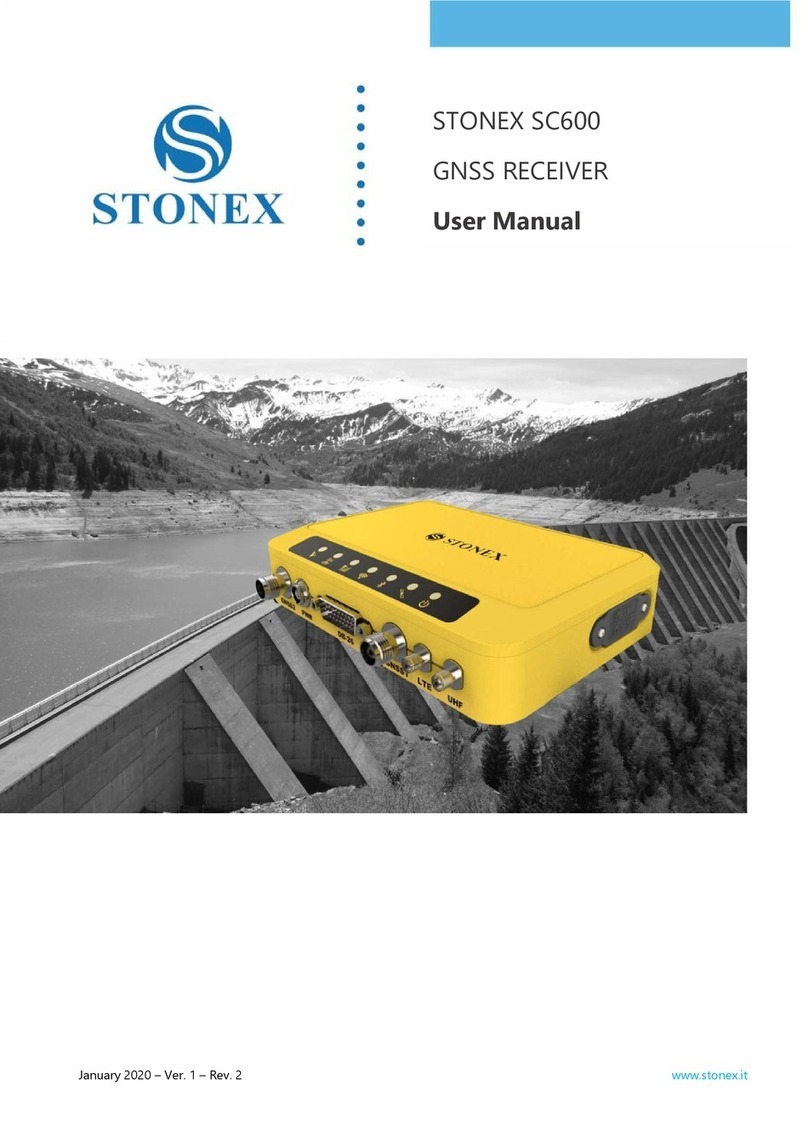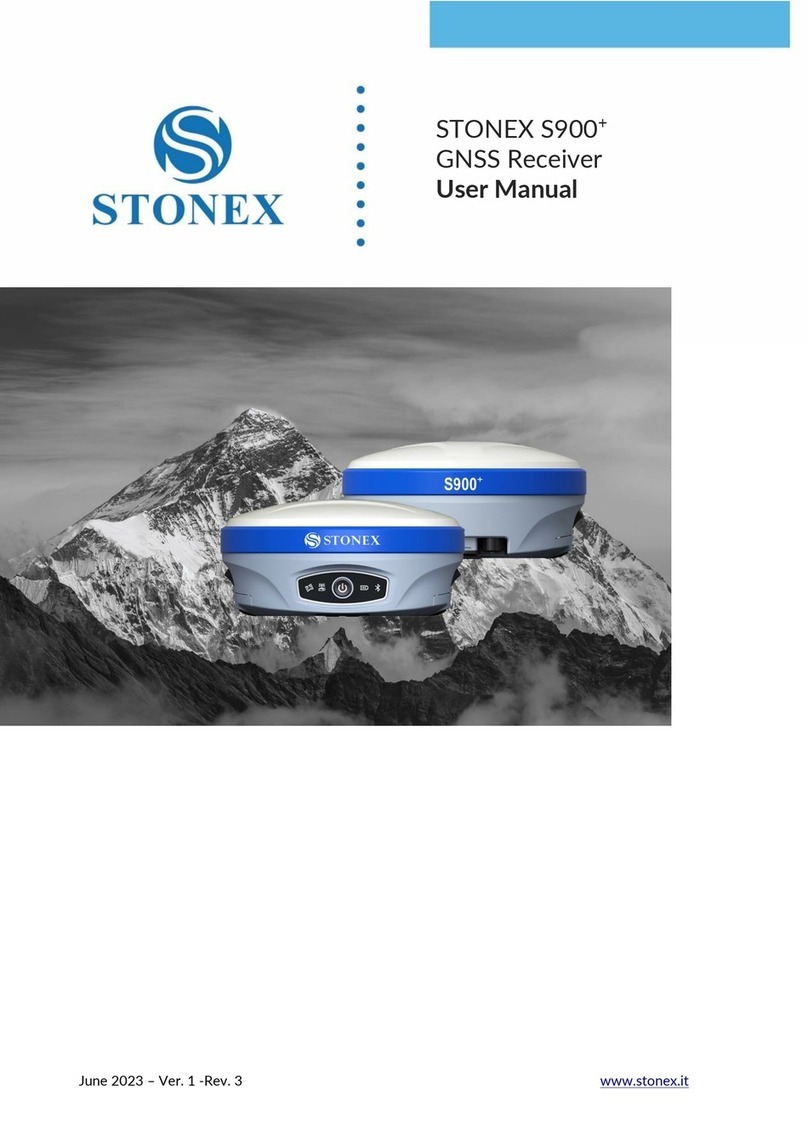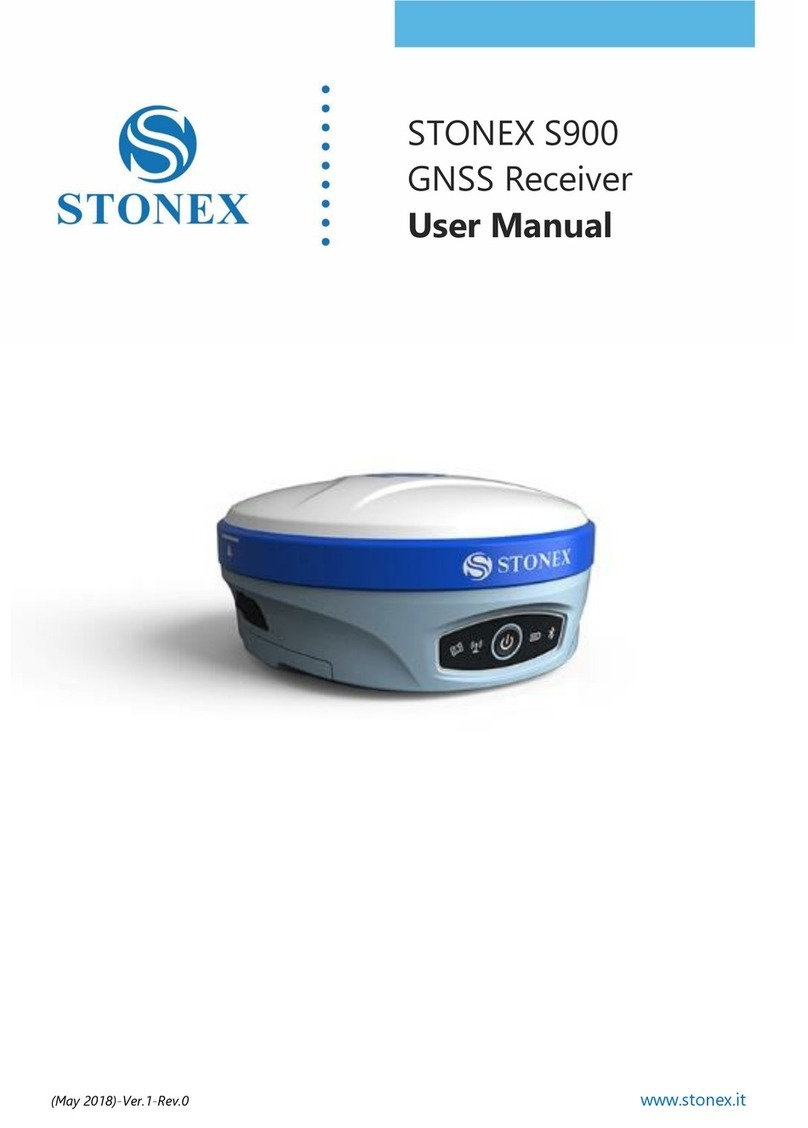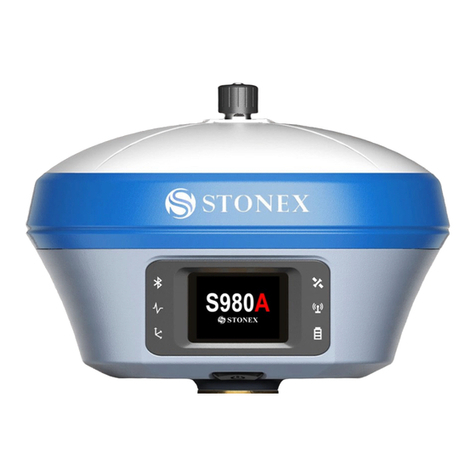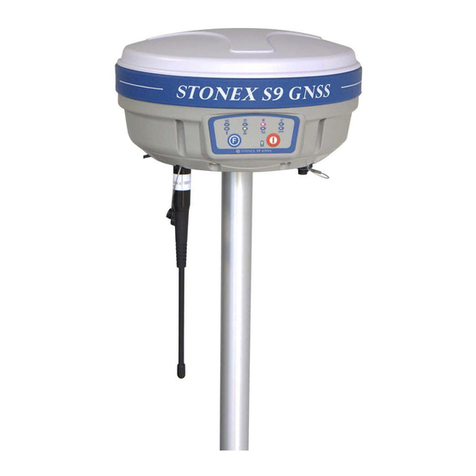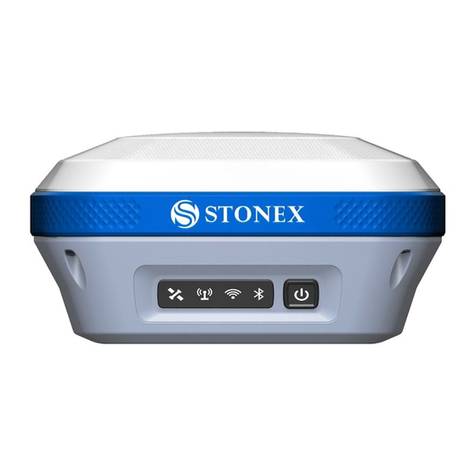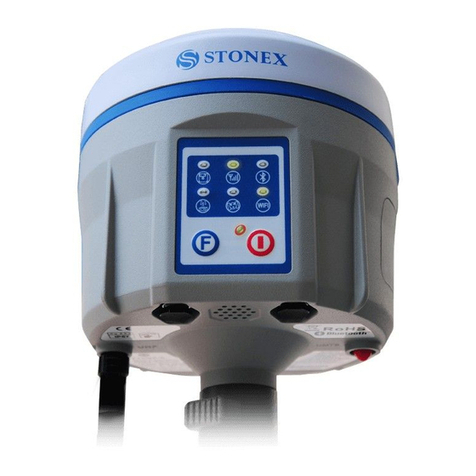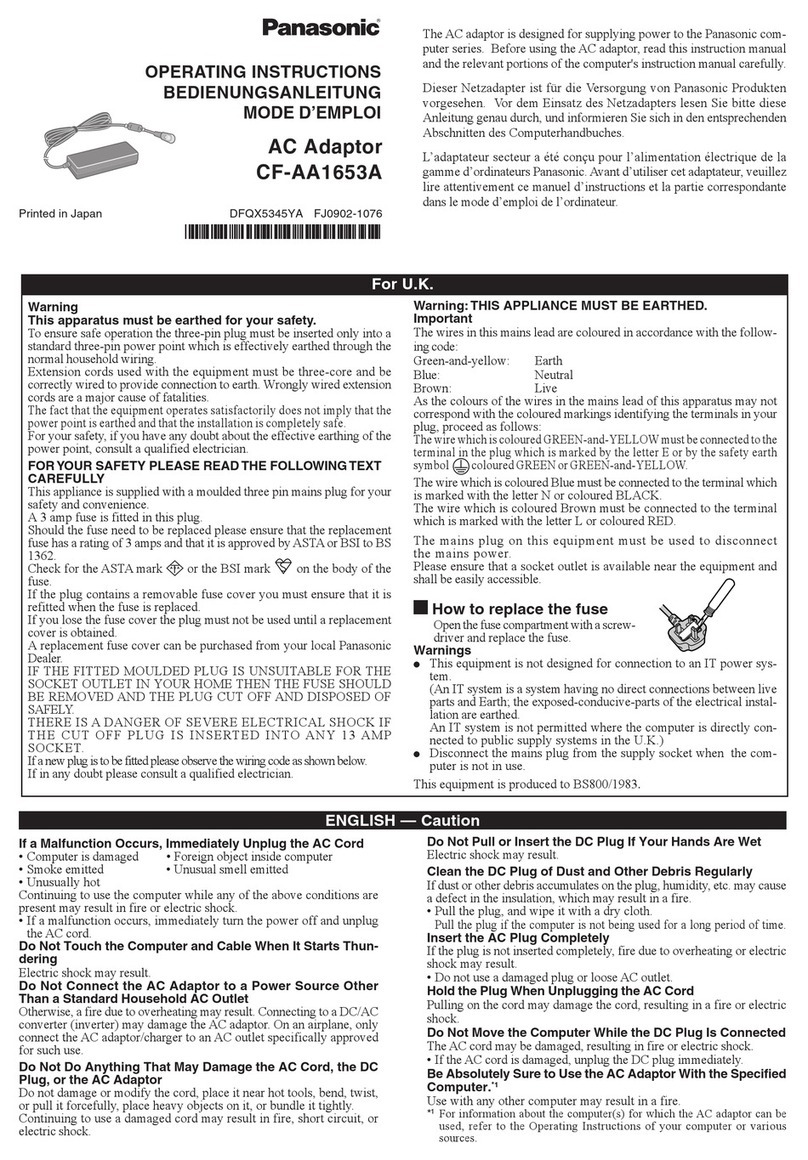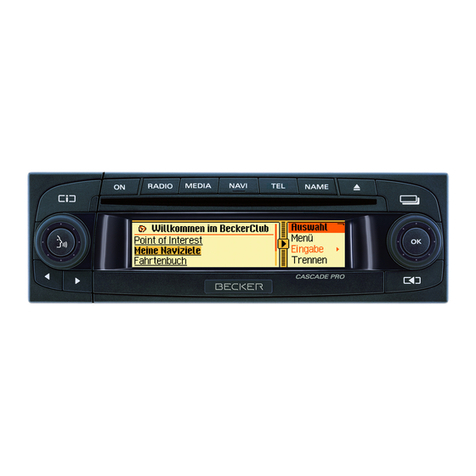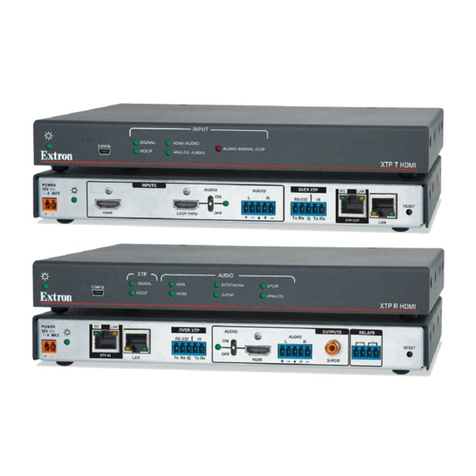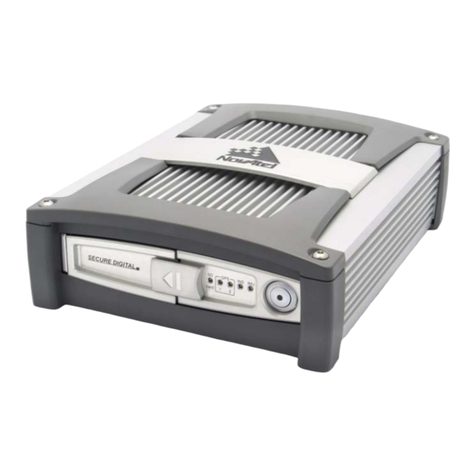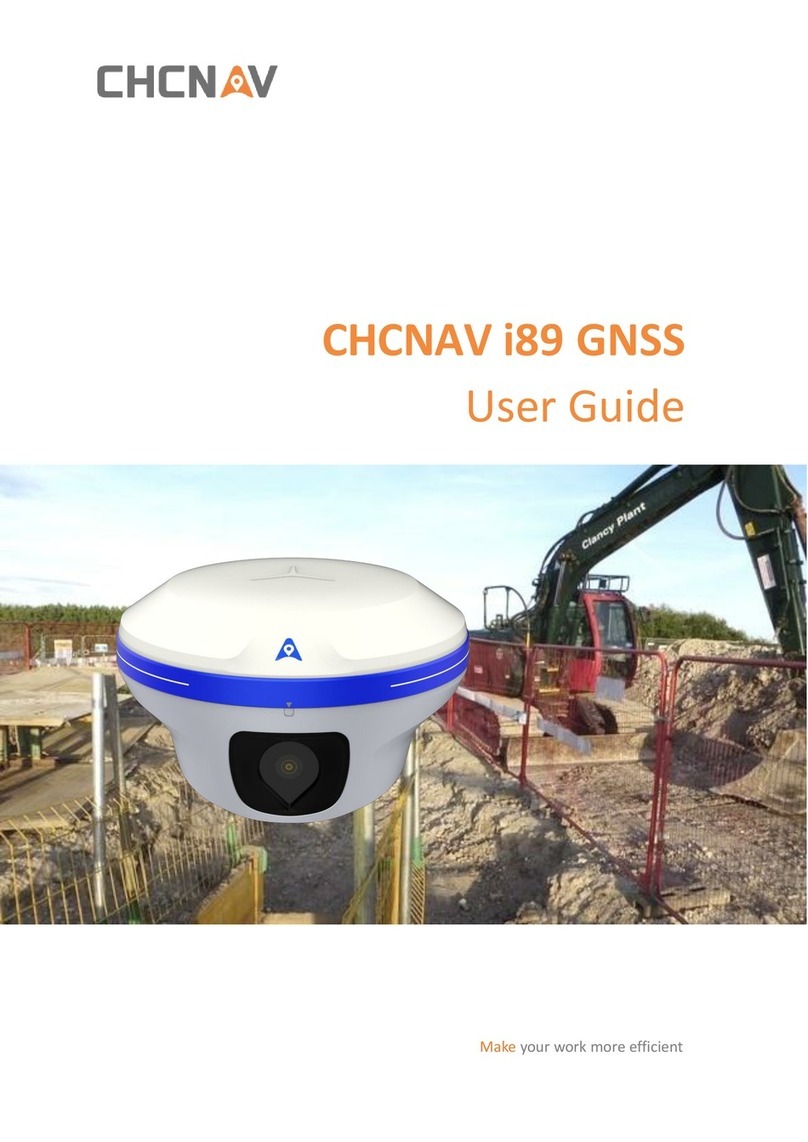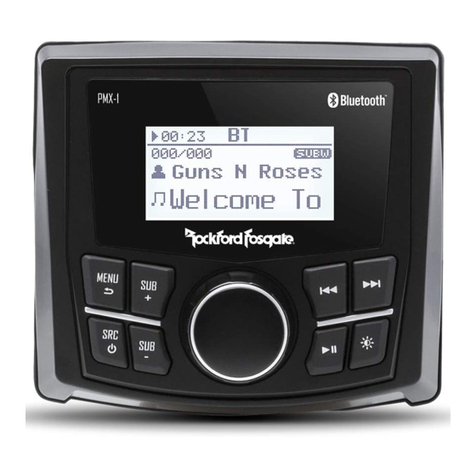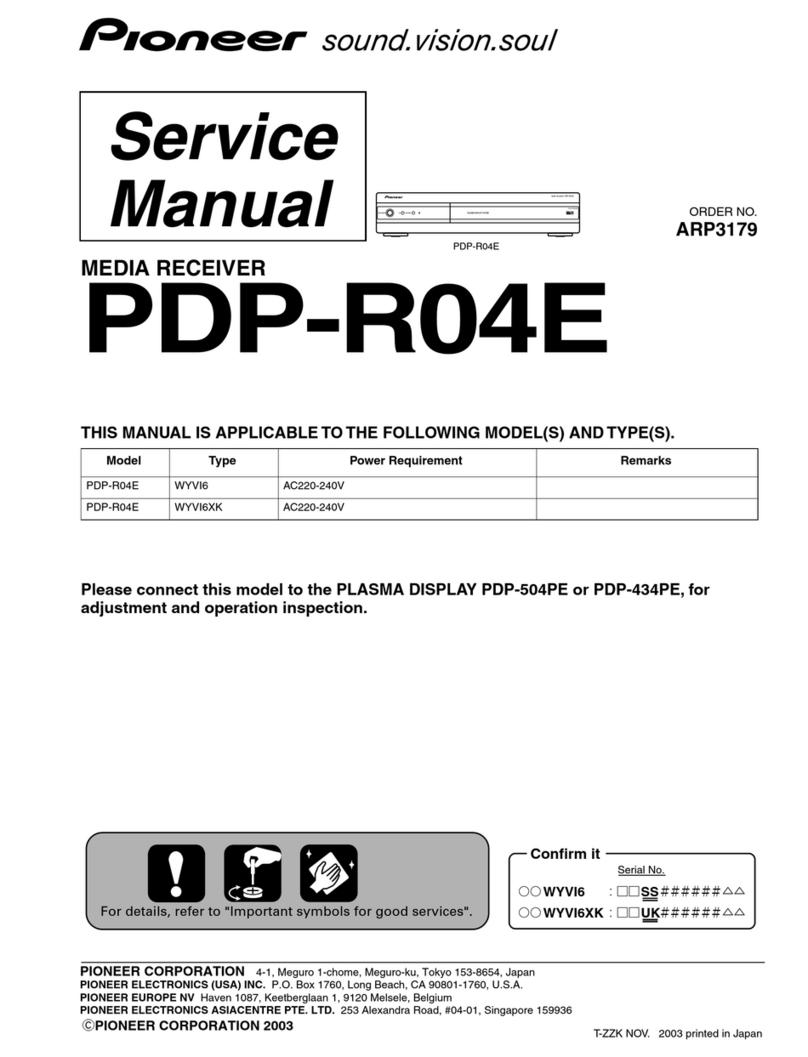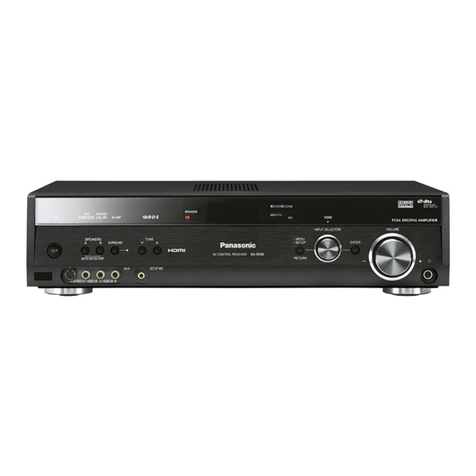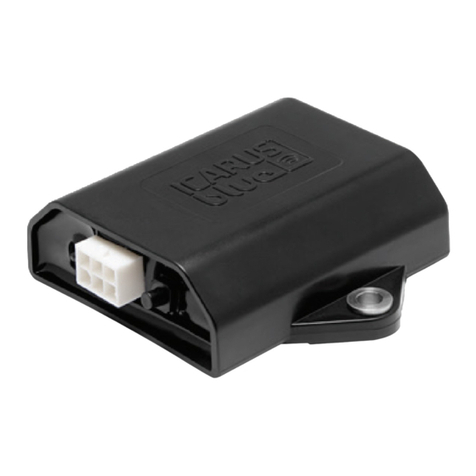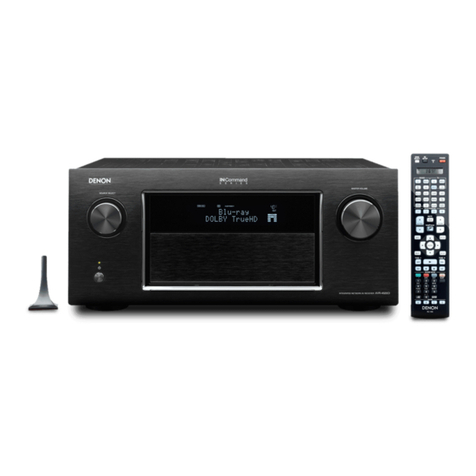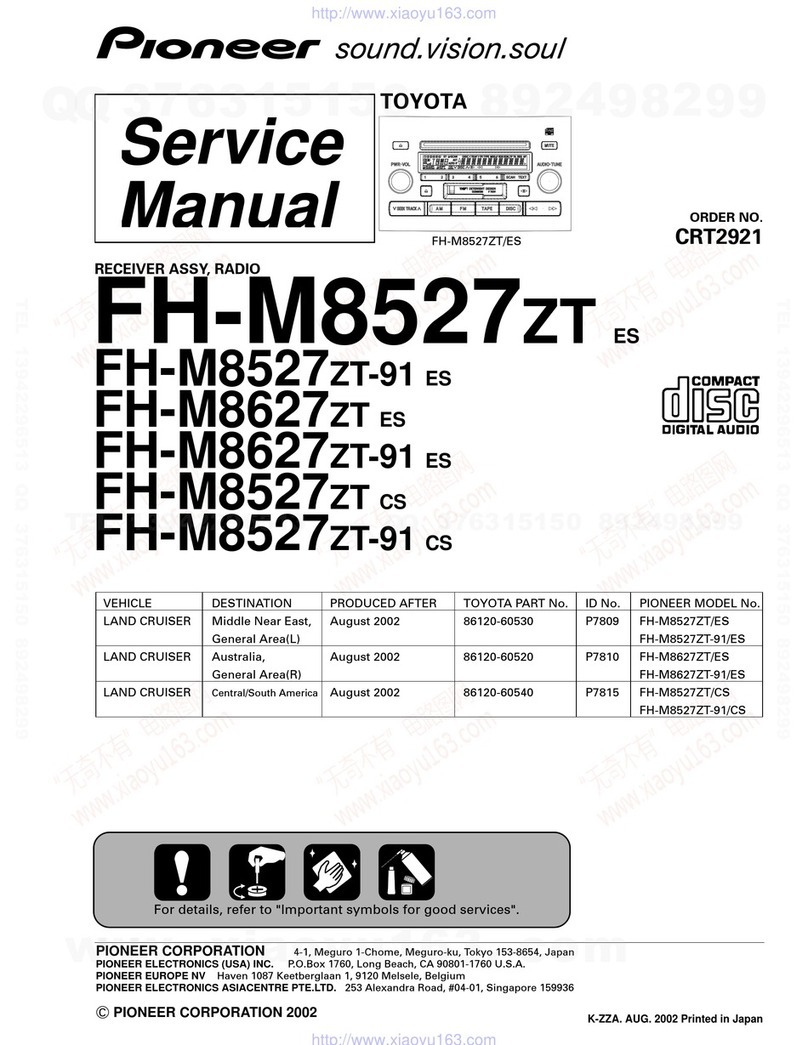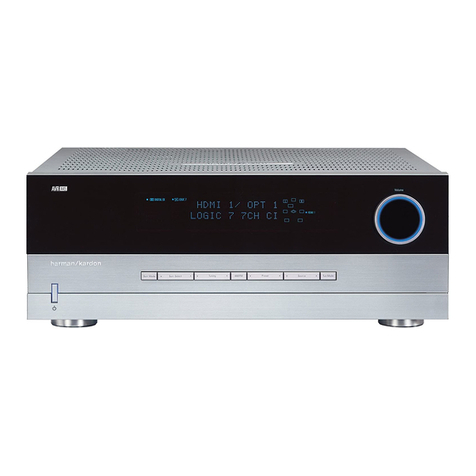STONEX S800 User manual

(April 2017)-Ver.1-Rev.0 - Firmware Version: 0.22.170401
STONEX S800
GNSS Receiver
User Manual
www.stonex.it

Stonex S800 GNSS Receiver - User Manual - Ver.1-Rev.0 1
Contents
1. Introduction to Stonex S800 GNSS...........................................................................2
2. Key features ...........................................................................................................................2
3. Precaution...............................................................................................................................3
4. S800 Surveying System....................................................................................................4
4.1 S800 Receiver ................................................................................................................4
4.1.1 Receiver appearance...............................................................................................4
4.1.2 The bottom of Receiver.........................................................................................5
4.1.3 Control Panel .............................................................................................................6
4.1.4 Mode View and Mode Switch.............................................................................7
5. Standard Accessories ........................................................................................................9
5.1 Transport container ....................................................................................................9
5.2 Adaptor............................................................................................................................9
5.3 UHF Antenna .................................................................................................................9
5.5 Other Accessories..................................................................................................... 10
6. Static Surveying................................................................................................................ 11
6.1 Static Surveying Introduction ..............................................................................11
6.2 Static Surveying Operation...................................................................................11
6.3 Data acquisition method ....................................................................................... 12
6.4 RTK Dynamic Measurement (Radio)................................................................. 13
6.4.1 Installation of Base ............................................................................................... 13
6.4.2 Start of Base ............................................................................................................13
6.4.3 Installation of Rover............................................................................................. 14
6.4.4 Configuration of Rover ....................................................................................... 14
6.5 RTK Dynamic Measurement (Network) ........................................................... 14
6.5.1 Installations of Rover........................................................................................... 14
6.5.2 Configuration Rover............................................................................................. 15
7.1 Status ............................................................................................................................. 16
7.2 Settings ......................................................................................................................... 17
7.3 Download.....................................................................................................................17
7.4 Management .............................................................................................................. 18
7.4.1 Device Register....................................................................................................... 18
Appendix 1: S800 Receiver Specification ................................................... 19
Appendix 2: Default Radio Configuration.................................................. 21
Appendix 3: Copyrights, warranty and environmental recycling ........... 22
Appendix 4: Safety Recommendations....................................................... 29

Stonex S800 GNSS Receiver - User Manual - Ver.1-Rev.0 2
1. Introduction to Stonex S800 GNSS
Thank you for choosing our products. STONEX®, as a leading RTK
manufacturer, is committed to providing the most advanced GNSS surveying
tools.
This manual applies to S800 products, containing instructions for installing,
configuring the product and operating it. Even if you have used other RTK
products of ours before, we recommend that you spend some time reading
this manual for better user learning.
S800 is a super miniature GNSS RTK receiver of STONEX®. With brand-new
appearance design and solid magnesium alloy structure, it supports GPS,
GLONASS, BeiDou and Galileo satellite navigation system, which meets
accuracy demands of modern surveying to provide reliable surveying results
and user friendly operation.
S800 brings you the utmost experience.
If you are not familiar with GNSS technology, we suggest you to read a
specific book in order to understand in the best way the contents of this
manual.
Anyway, you can ask for any technical support by sending an email to our
2. Key features
Multi-constellation system. Supports BeiDou, GPS, GLONASS and
Galileo multi-system navigation and positioning.
Compact and convenient. High integration.
IP67 Waterproof and Dust Proof Rating. Shock resistant.
Highly integrated internal antenna. Zero phase center offset.
Onboard 8G memory.
Powerful battery endurance with over 10 hours’ continuous
operation.

Stonex S800 GNSS Receiver - User Manual - Ver.1-Rev.0 3
3. Precaution
Transportation: during the transport, the receiver and its accessories must
be reasonably placed in its transport container, to protect against shock and
vibration. Specially note that S800 contains a non-removable internal Lithium
Battery, whose national and international regulations must be observed and
fulfilled in transportation.
Storage: before storage, discharge battery below 30%. After storage
recharge batteries before using. A proper storage temperature in a dry
environment is recommended to minimize self-discharging of the battery.
Keep the receiver dry in storage and before using.
Cleaning and Drying: use only a clean, soft, lint-free cloth for cleaning. If
necessary, moisten the cloth with water or pure alcohol. In all kinds of
weather conditions, after coming back from the field, dry the product, the
transport container, the foam inserts and the accessories. Pack them after
they have dried. Keep plugs clean and dry. Wet connectors must be dry
before attaching the dust cap.

Stonex S800 GNSS Receiver - User Manual - Ver.1-Rev.0 4
4. S800 Surveying System
S800 surveying system consists of three main components, namely receiver,
handheld and accessories. In the following parts are their introductions.
4.1 S800 Receiver
4.1.1 Receiver appearance
The receiver’s dimension is 146mm*146mm*76mm, weighting 1.2kg, with its
appearance as illustrated in Figure 4-1. The front side is control panel,
consisting of 1 power button and 4 indicators. The bottom are interfaces of
UHF antenna and cables.
Figure 4-1 S800 Receiver

Stonex S800 GNSS Receiver - User Manual - Ver.1-Rev.0 5
4.1.2 The bottom of Receiver
At the bottom of the receiver is labelled system-unit serial number. The
bottom interfaces are illustrated in Figure 4-2, with covers for dust and water
prevention.
Figure 4-2 Receiver bottom
TNC interface: connect internal radio antenna.
2-pin LEMO port: charge for internal battery, connect adaptor.
5-pin LEMO port: connect external power supply and external radio
7-pin LEMO port: connect PC or handheld, USB+serial port

Stonex S800 GNSS Receiver - User Manual - Ver.1-Rev.0 6
4.1.3 Control Panel
Control Panel is illustrated in Figure 4-3.
Figure 4-3 Control Panel
Table: Indicator function description
Indicator
Status
Description
Power button
On: sufficient power
Fast flashing (1s): low
power (below 10%)
Slowly flashing (3s):
charging
When the S800 receiver is powered on, the
power indicator will be lit. According to
battery power, the power indicator shows
the following three different statuses:
1. On (Green): sufficient power supply
2. Fast flashing: power below 10%,
indicator flashing once per second
3. Slowly flashing: charging, indicator
flashing once per 3 seconds
Note: Most often, when power indicator is
fast flashing, the internal battery can support
receiver to continuously work for only 1
hour. The indicator shows both statuses of
internal battery and external power, and
when the receiver connects to external
power, the indicator will automatically switch
to showing status of external power.

Stonex S800 GNSS Receiver - User Manual - Ver.1-Rev.0 7
Satellite led
Blink: Lock satellites
Off: invalid solution
(Lock no satellite)
This led shows the amount of locked
satellites. When the receiver locks more than
one satellite, the led will start flashing in a
loop per 30 seconds,and the number of
flashes is the number of the satellites locked
by the receiver. When the receiver locks no
satellite, it’s off.
Data link led
Flashing: data is
transmitting
When the receiver starts to transmit or
receive data, the led starts flashing.
WIFI led
On: WIFI on
Off: WIFI off
When WIFI is on, the led is lit green.
When the WIFI is off, the led is off.
Bluetooth led
On: Bluetooth has
connected.
Flashing: Bluetooth
has connected and is
receiving differential
data.
Off: no connection
When receiver is connected to handheld or
other instruments by Bluetooth, the led will
be lit blue.
When receiver has connected to other
instruments by Bluetooth and is receiving
differential data, the led will be flashing.
When receiver doesn’t use Bluetooth, the led
won’t be lit.
4.1.4 Mode View and Mode Switch
Mode view
When receiver is powered on, flip the power button and then it will voice
broadcast the current working mode and data link.
Mode switch
When the receiver is powered on, connect it with handheld or other
instruments so as to set up and switch the working mode of receiver.

Stonex S800 GNSS Receiver - User Manual - Ver.1-Rev.0 8
4.1.5 Receiver Self-check
Self-check functionality is to check whether every module works normally.
When S800 receiver has indicators off or module doesn’t work normally, you
can use self-check to inspect the receiver. S800 self-check consists of four
parts, namely GPS, radio, WIFI and Bluetooth. The self-check results will be
voice broadcasted in the process. Self-check operation and result broadcast
are as followed:
a) When receiver is powered on, press power button and hold it until
the receiver voice broadcasts “power off”. Press it again until the
receiver sounds a beep and voice broadcasts “self-check”, which
means the receiver starts to operate self-check. (New receiver is
recommended to operate self-check at least once).
b) In the process of self-check, each module inspection is followed by
its inspection result. If the module inspection passes, it will voice
broadcast “OK” and module led keeps on until the whole self-check
finishes. If the module inspection fails, it will voice broadcast current
module inspection fail, keep module led flashing and buzzer
sounding until you restart the receiver. Self-check lasts for about 1
minute. If there is self-check failure, please contact local dealer.
c) If every module indicator is lit with no flashing, and voice broadcast
says every module work normally (such as “GPS self-check. OK.”), it
means all the modules work normally. Receiver starts to work after
the whole self-check finishes.

Stonex S800 GNSS Receiver - User Manual - Ver.1-Rev.0 9
5. Standard Accessories
5.1 Transport container
There are two kinds of S800 containers: Rover container and Base container.
These two containers have similar appearances but their insert layouts are
different. (S800 containers are still under production).
5.2 Adaptor
S800 receiver adopts internal battery. You can use adaptor to charge the
receiver.
5.3 UHF Antenna
When receiver is in internal radio mode, UHF antenna (as illustrated in Figure
2-20) is in need.
UHF antennas have 3 models, respectively covering 3 frequency ranges as
shown in Table 2-6.
Table: UHF antenna models
Model
QT410A-1
QT440A-1
QT450A-1
Frequency (MHz)
410~430
430~450
450~470

Stonex S800 GNSS Receiver - User Manual - Ver.1-Rev.0 10
5.4 7-pin Serial Cable
One end of the 7-pin serial cable, the 7-pin serial port, is to connect the
receiver, and the other end of the cable, the USB and the D89 interface are
for data communication respectively with PC and handheld as illustrated in
Figure
Figure 5-1 7-pin serial cable
5.5 Other Accessories
Other accessories include glass mounting pole, controller holder, connector,
tray and measuring tape and other accessories.
Figure 5-2 Glass fiber mounting pole Figure 5-3 Controller holder
Figure 5-4 Connector Figure 5-5 Tray Figure 5-6 Measuring tape

Stonex S800 GNSS Receiver - User Manual - Ver.1-Rev.0 11
6. Static Surveying
6.1 Static Surveying Introduction
Static Surveying is an GPS positioning measurement by installing three or
more GNSS receivers at different measuring stations to measure
simultaneously so as to get the relative positions of measuring stations.
Scope of application:
•the establishment of national geodetic control network (second or
the following class).
•the establishment of precise engineering control network, such as
bridges measurement, tunnel measurement.
•the establishment of various densified control network, such as city
measurement, mapping control point measurement, road
measurement and boundaries location.
•GPS measurements including control survey used for mapping,
cadastral surveying, land information, real estate surveying,
geophysical prospecting, surveying and building construction in
small and medium-sized cities and towns, which should meet the
accuracy demand of D or E class GPS measurement.
6.2 Static Surveying Operation
a) Set up the tripod at the measuring station, switch the receiver to
static mode and attach it to the tribrach, centering and leveling it in
strict standard.
b) Measure the height of antenna.
c) Record names of station and receiver, height of receiver,
measurement start time, measurement end time, observation
session and satellite number.
d) Static data logging: Power on the receiver and make sure it is in
static mode. Receiver starts to search satellites and satellite led
starts to be flashing. When it meets the record demand, the satellite

Stonex S800 GNSS Receiver - User Manual - Ver.1-Rev.0 12
led will be flashing at default sampling interval, and one flash
represents having logged an epoch.
e) Power off the receiver after finishing data logging, and then
download the data to execute post processing.
f) 3.1.3 Design Principles of GPS Control Network.
1)In order to ensure the continuous tracking of satellites and quality of
satellite signal, set up the GPS measuring station in locations which are free
of obstructions, where the altitude angle of obstacles should be less than 15°
in the field of view.
2)In order to reduce or avoid interruption caused by electromagnetic wave
to satellite signal, set up the measuring station away from high-power radio
source (such as television station, broadcasting station and microwave
station). Also there should be no object nearby that can strongly reflect
satellite signal (such as large-scale buildings).
3)Measuring station should have convenient transportation and stable
ground foundation, easy for state holding and beneficial for extension of
other measuring method and joint measurement.
6.3 Data acquisition method
There are 2 acquisition methods of data: manual start and automatic start.
Open the Survey software (example here is SurPad) on the handheld, click
“Device” – “Communication”, choose the receiver model and the
communication mode. There are Bluetooth and WIFI like communication
modes.
a. Manual start
Click “Device” - “Working mode”, choose “Static”. At here, you can configure
static parameters, antenna parameters and satellite system.
b. Automatic start
Click “Device” - “Working mode”, choose “Static”. At parameter settings,
choose auto record static data and at the next time when the receiver is

Stonex S800 GNSS Receiver - User Manual - Ver.1-Rev.0 13
powered on, it can automatically start static data logging with no need to
reset.
6.4 RTK Dynamic Measurement (Radio)
RTK dynamic measurement (base and rover) has radio mode and network
mode, which two differs from each other in their ways of transmitting
differential signal.
6.4.1 Installation of Base
(1)Set up the tripod in location with known coordinates or unknown
coordinates, level it and attach the receiver on it.
(2)Set up the receiver according to the chosen data link. If using the
internal radio transmission, attach the internal radio antenna into the UHF
antenna port of receiver; if using external radio transmission, connect the
external radio to 5-pin port with 5-pin cable.
(3)Power on the receiver and select base mode.
6.4.2 Start of Base
Open SurPad on the handheld to choose communication mode. Click
“Device” - “Working mode” to choose base mode and configure its start up
mode, parameters, data link and satellite system and other settings.
Base has 2 start up modes.
a. Use Current Coordinates
Base uses approximate WGS-84 coordinates of current location as base
coordinates.
b. Input Base Coordinates
User specified base coordinates: the specified base coordinates cannot be far
away from the precise WGS-84 coordinates of the current location, otherwise
the base cannot work.

Stonex S800 GNSS Receiver - User Manual - Ver.1-Rev.0 14
6.4.3 Installation of Rover
After the installation of base, start to install rovers.
(1)Fix the bracket on the pole, fix the handheld to the bracket and then
install the rover on the pole.
(2)Attach the internal radio antenna or connect the external radio
according to the chosen data link.
(3)Power on the receiver and select rover mode.
6.4.4 Configuration of Rover
Open SurPad software on the handheld to choose communication mode.
Click “Device” - “Working mode” to choose rover mode and configure its
data link, antenna parameters and satellite system and other settings. When
data link is internal radio, you need to configure the radio channel,
frequency, protocol and power.
Note:
1. If you want an high-precision surveying result (several cm), it’s
recommended to use a tripod to install rover;
2. When the coverage of surveying area is large (over 4 km from base),
the working distance too far for internal radio to meet the demand,
it’s recommended to use external radio to connect the receiver;
3. Under radio mode, frequency and protocol settings of base and
rover should be the same.
6.5 RTK Dynamic Measurement (Network)
6.5.1 Installations of Rover
Because RTK network mode is transmitting differential data by network,
differing from radio mode only on their transmission method, the
installations of the rover is similar to the UHF procedure.

Stonex S800 GNSS Receiver - User Manual - Ver.1-Rev.0 15
6.5.2 Configuration Rover
Open SurPad on the handheld to choose communication mode. Click
“Device” - “Working mode” to choose rover mode and configure its data link,
antenna parameters and satellite system. When data link is handheld
network, you can configure IP, COM port and AP and other settings. It can
also operate as a RTK by getting access to server through handheld network,
using the handheld network module to get into internet. After connection to
the server, the received differential data can be transmitted to receiver so as
to realize that receiver can be a network RTK without SIM card.

Stonex S800 GNSS Receiver - User Manual - Ver.1-Rev.0 16
7. Web UI Application
S800 receiver has Web UI functionality. By getting access to its internal
hotspot, you can easily manage it on the Web UI. As long as you have a
smart phone, PC or handheld with WIFI functionality, you can easily connect
to the S800 receiver to view status, download data and configure the
receiver.
S800 receiver is default to open WIFI automatically when it’s powered on.
Use smart phone/PC/handheld to search the receiver hotspot, whose name is
its serial number, and connect it. (Receiver WIFI only supports getting access
to Web UI to check status and set up mode, not for Internet connection.)
After connecting to the S800 receiver WIFI, open the browser and enter
“192.168.10.1” in IP address. A window pops up and asks for user and
passport. The default user and password are shown as following:
User: admin Password: password
And then you can login the Web UI of S800 receiver.
7.1 Status
In Status, you can check the current status of receiver, including position,
data link, satellite and device information. You can see detailed information
with respective tap as illustrated in Figure 7-1.
Figure 7-1: Position Information

Stonex S800 GNSS Receiver - User Manual - Ver.1-Rev.0 17
7.2 Settings
In Settings, there are 6 options, namely working mode, satellite settings,
device configuration, NMEA message, view logs and configuration set. At
here, you can configure the receiver working mode, satellite system, system
parameter and NMEA information. You can also view and download logs,
and upload, download, delete and apply related configuration. You can see
detailed information with respective tap as illustrated in Figure 7-2.
Figure 7-2: Satellites settings
7.3 Download
In Download, it provides download of raw data and backups data. You can
see detailed information with respective tap as illustrated in Figure 7-3.
Figure 7-3: Backups data

Stonex S800 GNSS Receiver - User Manual - Ver.1-Rev.0 18
7.4 Management
In Management, it provides online update, device register, password
modification, device disk formatting, self-test, restore factory settings and
reset as illustrated in Figure 7-4.
Figure 7-4: Management
7.4.1 Device Register
The register code consists of 32 digits and letters. You can register the device
via WEB UI. The detailed steps are shown as followed:
In management page, you can see “registration”. Input register code and
click submit, and then registration is done. After registration, you can check
the expiration time of current registration in the page.
You can also register device via controller. Open SurPad software on the
handheld and connect the receiver. Click “About” - “Register instrument”,
then input code and registration is done.

Stonex S800 GNSS Receiver - User Manual - Ver.1-Rev.0 19
Appendix 1: S800 Receiver Specification
RECEIVER
Satellite Tracked
GPS: L1 C/A, L1C, L2C, L2P, L5
GLONASS: L1 C/A, L2C, L2P, L3, L5
BEIDOU: B1, B2, B3
GALILEO: E1, E5 AltBOC, E5a, E5b, E6
QZSS: L1 C/A, L1C, L2C, L5, L6
SBAS: L1, L5
IRNSS: L5
Channels
555
Position Rate
5 Hz
Signal Reacquisition
< 1 sec
RTK Signal Initialization
Typically < 10 s
Hot Start
Typically < 15 s
Initialization Reliability
> 99.9 %
Internal Memory
8 GB
POSITIONING1
HIGH PRECISION STATIC SURVEYING
Horizontal
2.5 mm + 1 ppm RMS
Vertical
5.0 mm + 1 ppm RMS
CODE DIFFERENTIAL POSITIONING
Horizontal
<0.5 m RMS
Vertical
<1.0 m RMS
SBAS POSITIONING
Horizontal
<0.6 m RMS2
Vertical
<1.2 m RMS2
REAL TIME KINEMATIC (< 30 Km) –NETWORK SURVEYING3
Fixed RTK Horizontal
8 mm + 1 ppm RMS
Fixed RTK Vertical
15 mm + 1 ppm RMS
INTEGRATED GNSS ANTENNA
High accuracy four constellation micro-strip antenna, zero-phase center, with
internal multipath suppressive board
INTERNAL RADIO
Type
Tx - Rx
Frequency Range
410 - 470 MHz
Channel Spacing
12.5 KHz / 25 KHz
Maximum Range
3-4 Km in urban environment
Up to 10 Km with optimal conditions4
Table of contents
Other STONEX Receiver manuals
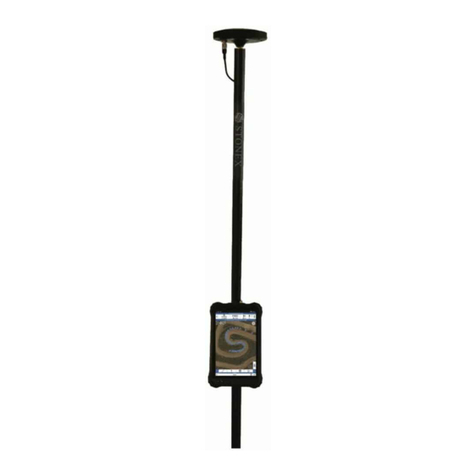
STONEX
STONEX S70G User manual

STONEX
STONEX S9i User manual
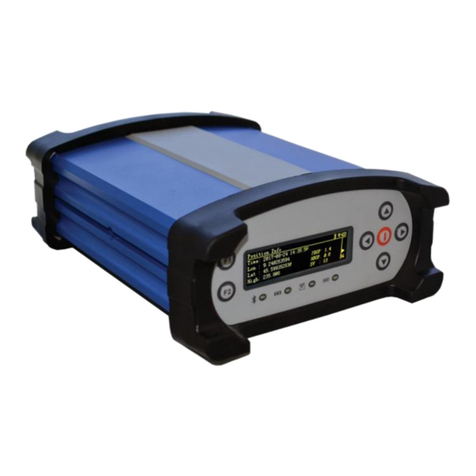
STONEX
STONEX SC2000 User manual

STONEX
STONEX S900A User manual
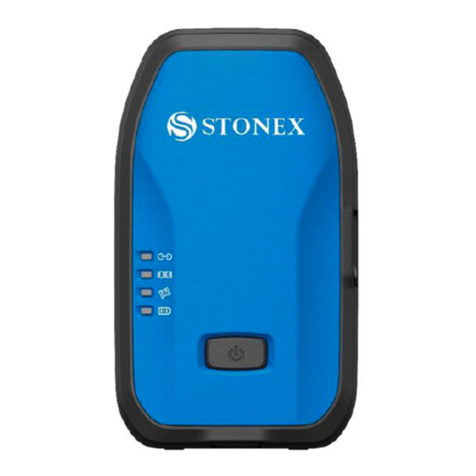
STONEX
STONEX S580 User manual
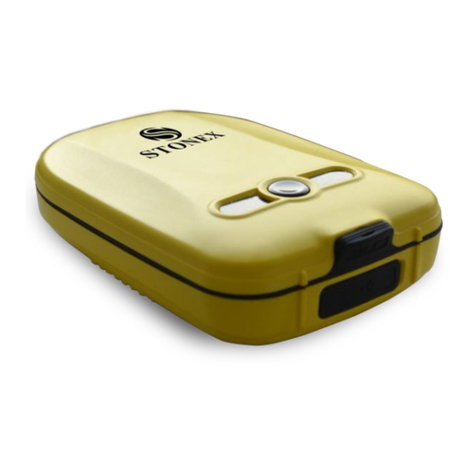
STONEX
STONEX S5 User manual

STONEX
STONEX S990A User manual

STONEX
STONEX S900T User manual
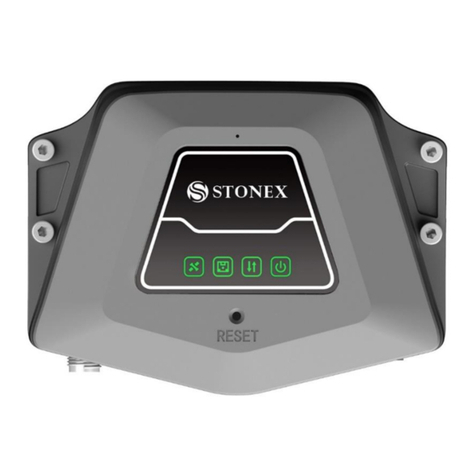
STONEX
STONEX SC400A User manual
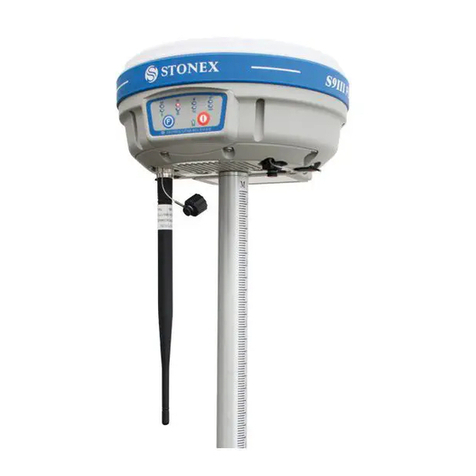
STONEX
STONEX S9III Plus User manual

